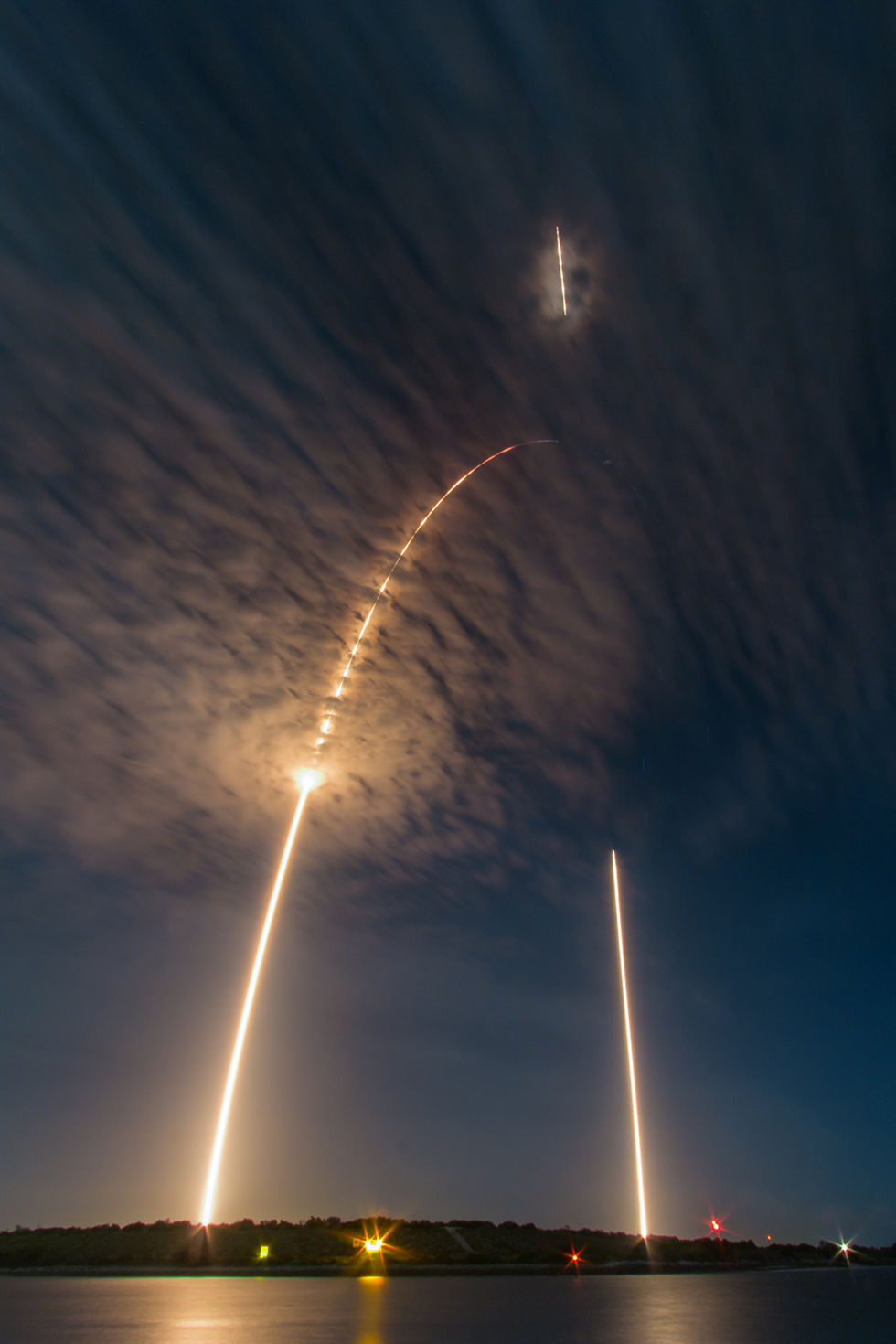An Industry for Earth Stewardship: Earth Day and Crew-2
April 22 is known on this planet as Earth Day. Today, millions of people around the world are celebrating our planet, and NASA’s Johnson Space Center invites you to join in the activities.
Aptly, NASA is starting tomorrow, April 23, with the Crew-2 launch, the first time that a partially reused rocket is sending humans into space. Falcon 9 boosters have been repurposed to send payloads into space for years, with one booster having been reused nine times to launch satellites. The Falcon 9 stage one booster that will be used was the same one recovered from the Crew-1 launch in November, marking a new milestone in sustainable spaceflight. The four astronauts will soon witness our beautiful planet from miles above, knowing that they are part of a pioneering moment in reducing the environmental footprint of journeying to the station. What a special moment it will be!
Steps towards a clean launch are important for Earth stewardship as space exploration ramps up and space tourism emerges. A partially reusable rocket conserves resources for other uses. Expendable rockets are destroyed upon re-entry, become space debris, and pose a hazard that requires monitoring. Recovery, too, is required for any debris that may fall into the ocean.
A rocket is made primarily of metal alloy, requiring substantial energy inputs to mine, transport, and forge. The production of rockets is energy-intensive. Think of the heat tolerance the launch vehicle must withstand and the energy required to power production, in addition to emissions considerations. Like any product, the more times an item is used, the less demand it places on our resources and environment. Reusing part of a launch vehicle is not only good for the planet, but also a celebration of human ingenuity. Who can forget the excitement from the very first Falcon 9 landing in 2015?
Aside from rockets, reusable capsules are also an important goal for the agency. In the past, there was space shuttle and, looking forward to the future, there will be SpaceX’s Crew Dragon and Boeing’s Starliner modules. Equally important is the fuel used for spaceflight. Fuels produce a variety of emissions. For example, Falcon 9 uses RP-1, a highly refined kerosene, and liquid oxygen. When burnt, the fuels produce carbon dioxide, water vapor, NOx, carbon soot, and carbon monoxide — compounds that cause health problems or are linked to a changing climate. NASA’s work to develop a less-toxic alternative to hydrazine and the option of clean-burning hydrogen fuel will reduce the impact of launches on our health and planet. Another opportunity to transform the aerospace industry into a more sustainable one is by building closed-loop engines for more complete combustion. This enables greater fuel efficiency and less waste than open-cycle engines offer.
Over the past decade of the Commercial Crew Program, the ingenuity and dedication of commercial partners and NASA to achieve sustainability in spaceflight has been heartening. We can look forward to a future of cost savings, greater efficiency, and reduced emissions and exposure to toxins. Regardless of whether you’re designing an xEMU air system or accounting for millions of taxpayer dollars, you can play a role in transforming the aerospace industry for our planet. Use your voice to ask questions and plant ideas, and practice Earth stewardship in your day-to-day activities. Model pro-Earth behaviors and attitudes, you can inspire others to think and act differently.
The Crew-2 launch is coming soon, but it is just the beginning of an exciting dawn on Earth. On the world stage, the White House is convening world leaders to discuss climate action. NASA is playing an advisory role and providing Earth Observations data to inform the discussion. In addition, NASA is hosting public activities, including a space station downlink, scavenger hunt, and live chat (website registration required for access).
Closer to home in Houston, clean energy incubator Greentown Labs is officially opening. The JSC Sustainability Office will be hosting the Houston Zoo and Master Naturalist Sandy Parker to discuss plants. The Sustainability Office also invites you to continue sharing your plants and participate in the Weekend Challenges to address climate change. Visit Johnson’s Earth Month webpage for additional information.
Every day is Earth Day on the space station, because astronauts cannot get enough of our spectacular planet. For us non-astronauts, every day is Earth stewardship day because, every day, we are fortunate to be able to enjoy and interact with our beautiful planet.
.jpg)









